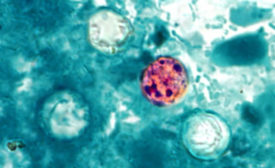Larry Keener CFS, PA
Larry Keener, CFS, PA is President and CEO of International Product Safety Consultants. He is also a member of the Editorial Advisory Board of Food Safety Magazine.
ARTICLES
Biocidal chemicals and other physical/chemical techniques may be used together, in a strategic manner, to achieve an overall improvement in plant hygiene
Read More
Hydroxyl Radicals for a Radical Advantage in Food Processing Hygiene: A Survey of Biocides Used by the Food Industry—Part 1
The use of hydroxyl radical air cleaners is a unique and valuable addition to the food industry's methods of minimizing pathogens in air and on surfaces
December 19, 2024
Medically Important Foodborne Parasites: A Consequential Challenge for Food Safety Assurance
Foodborne parasitic diseases are often overlooked in food safety control schemes, even though they are known to pose a severe threat to human health
April 11, 2024
Food Safety Objectives: The Nexus among Preventive Controls, Validation, and Food Safety Assurance
The Food Safety Objective concept is compatible with the foundational precepts of process validation
February 6, 2023
Foodborne Parasites: An Insidious Threat to Food Safety and Public Health
Often neglected in risk assessments, foodborne parasites deserve more scrutiny—and prevention
October 18, 2021
LEEB
Winning the Fight against Pathogens on Spices
Low-energy electron beam (LEEB): A breakthrough microbial reduction technology
April 15, 2021
Never miss the latest news and trends driving the food safety industry
eNewsletter | Website | eMagazine
JOIN TODAY!Copyright ©2025. All Rights Reserved BNP Media.
Design, CMS, Hosting & Web Development :: ePublishing










